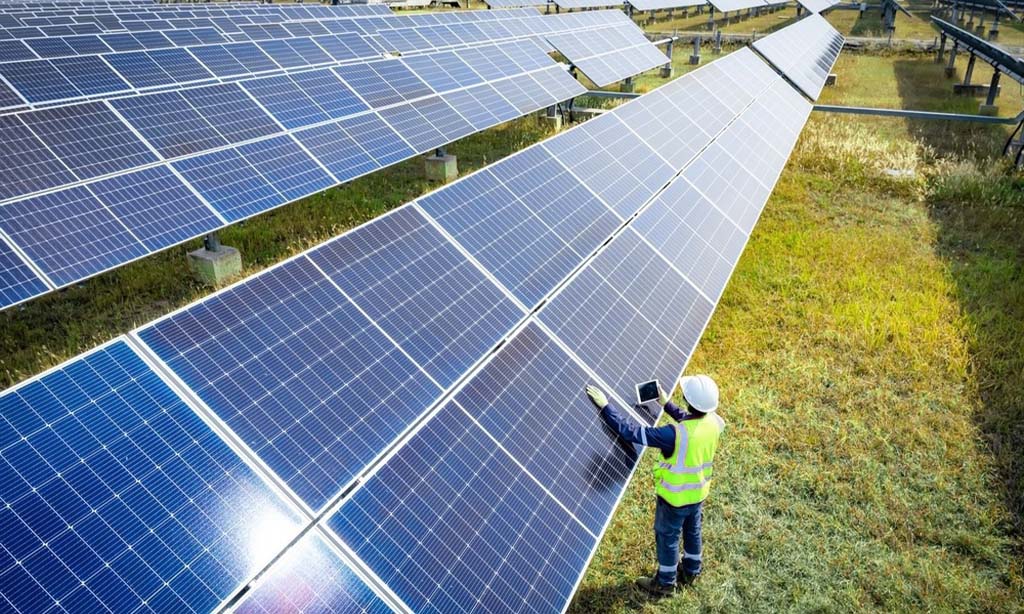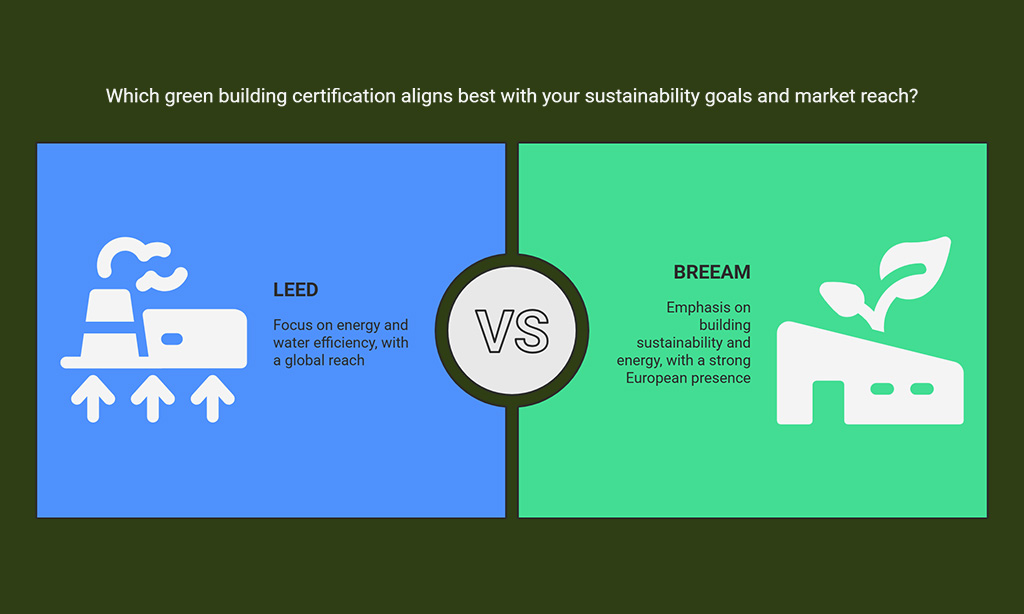The real estate industry has been undergoing a profound transformation in recent years, driven by the imperative to embrace sustainability, reduce energy consumption, and minimize environmental impact.
With growing awareness of climate change and the urgent need for sustainable solutions, innovative green technologies are shaping the future of real estate in ways that benefit property owners, developers, tenants, and the environment alike.
These technologies are not only transforming how buildings are constructed and operated but are also enhancing energy efficiency, lowering operational costs, and improving the overall quality of life.
As the world shifts toward more sustainable practices, green technologies in real estate are more critical than ever. In this article, we will explore 8 innovative green technologies shaping the future of real estate, providing you with a comprehensive understanding of each technology, its benefits, real-world examples, and how it can help create smarter, greener properties.
1. Smart Energy Management Systems
Smart energy management systems (SEMS) leverage technology to optimize energy usage in buildings by incorporating sensors, meters, thermostats, and cloud-based platforms to monitor and control energy consumption. These systems are designed to dynamically adjust energy settings based on occupancy, time of day, and energy demand, ensuring that energy is used efficiently and effectively.
By integrating automation and artificial intelligence, SEMS can lower energy costs, improve efficiency, and contribute to reducing a building’s carbon footprint. This energy optimization can be achieved through the intelligent management of heating, ventilation, air conditioning (HVAC), lighting, and other key energy systems within a property.
Benefits of Smart Energy Systems for Property Owners and Developers
- Reduced Energy Costs: SEMS can reduce energy bills by automatically adjusting systems to minimize energy waste. For example, lights and HVAC systems can be turned off when rooms are unoccupied.
- Improved Property Value: Properties equipped with smart technologies, like SEMS, tend to have a higher market value due to their energy efficiency and sustainability features.
- Sustainability and Compliance: With increasing energy regulations worldwide, integrating SEMS helps property owners comply with energy-saving laws and sustainability goals, enhancing their reputation as responsible stakeholders.
Real-World Examples of Smart Energy Solutions in Real Estate
- The Edge in Amsterdam: The Edge is an office building designed to be one of the greenest in the world. With a fully integrated smart energy management system, the building leverages sensors and analytics to adjust energy use, improving efficiency and ensuring the building operates sustainably.
- Smart Homes with Nest Thermostats: Nest’s smart thermostats are being used in both residential and commercial spaces to control heating and cooling, optimizing energy consumption based on user preferences and occupancy patterns.
Comparison of Smart Energy Solutions
| Technology | Benefits | Real-World Example | Cost Savings Potential |
| Smart Thermostats | Energy savings, convenience | Nest Thermostats in smart homes | Medium to High |
| Smart Energy Meters | Real-time monitoring, energy tracking | Smart meters in The Edge | High |
| Automated Lighting Systems | Reduced energy waste, convenience | Office buildings with motion-sensing lights | Medium |
2. Solar Energy Innovations
Solar energy continues to be one of the most widely adopted renewable energy sources in the real estate sector. Solar panels are integrated into building designs to convert sunlight into electricity, offering significant environmental and economic benefits. Innovations in solar energy, such as solar roofs and solar glass, have made it even easier to integrate solar technology into buildings without compromising aesthetic appeal or functionality.
Solar-powered buildings not only reduce dependence on non-renewable energy but also contribute to the creation of energy-efficient homes and commercial spaces. Solar energy is now more accessible and cost-effective than ever, making it a key component of sustainable real estate development.
Environmental and Financial Benefits of Solar Energy
- Cost Savings: Solar energy systems provide long-term savings by reducing electricity bills, especially in regions with high sunlight exposure. In many cases, properties with solar panels can achieve a return on investment (ROI) within 5-10 years.
- Reduced Environmental Impact: Solar power generates clean, renewable energy, reducing greenhouse gas emissions and reliance on fossil fuels. The environmental benefits are significant, with one home equipped with solar panels potentially saving over 100 tons of CO2 over its lifetime.
- Increased Property Value: Homes and commercial properties with solar installations have higher resale values. Studies show that properties with solar panels can sell for 4-5% more than those without.
Case Studies: Solar-Powered Developments in Real Estate
- The Crystal in London: This world-renowned office building is one of the greenest buildings in the UK. The Crystal boasts a full array of sustainable features, including solar panels that help generate renewable energy onsite, ensuring the building meets its sustainability goals.
- SunPower Solar Communities: SunPower has been a leader in residential solar energy, developing entire communities powered by solar energy. These homes provide significant energy savings for homeowners and reduce the overall environmental impact of the development.
Solar Energy Cost and Benefits Breakdown
| Solar Technology | Environmental Benefits | Financial Benefits | ROI (Years) |
| Solar Panels | Reduces carbon footprint, renewable energy | Lower utility bills, long-term savings | 5-10 years |
| Solar Roofs | Reduces roof temperature, improves energy efficiency | Increased property value, cost savings | 6-12 years |
3. Green Building Materials and Sustainable Construction Practices
Green building materials are those that are environmentally responsible and resource-efficient throughout their lifecycle, from extraction and manufacturing to use and disposal. These materials minimize energy usage, reduce waste, and often come from renewable sources, making them crucial in the construction of sustainable buildings.
Some examples include recycled steel, bamboo, and low-impact insulation materials. These materials are increasingly being integrated into real estate development as part of efforts to reduce environmental harm, improve energy efficiency, and ensure buildings are built for the future.
Benefits of Sustainable Construction Practices
- Energy Efficiency: Green materials such as insulated concrete forms (ICFs) and structural insulated panels (SIPs) provide superior insulation, reducing energy consumption and making heating and cooling more efficient.
- Reduced Environmental Impact: By sourcing sustainable materials and using construction practices that reduce waste, developers can significantly decrease their environmental footprint.
- Cost Savings Over Time: Sustainable buildings often have lower maintenance and operational costs due to the durability of green materials and their efficiency.
How Green Materials Enhance Energy Efficiency and Durability
Green building materials improve energy efficiency by reducing the amount of energy needed to heat and cool a building. They also contribute to the durability of the structure, meaning fewer repairs and replacements are needed throughout its lifespan.
Common Green Building Materials and Benefits
| Material | Benefits | Environmental Impact |
| Bamboo | Renewable, fast-growing | Low environmental footprint |
| Recycled Steel | Reduces need for virgin materials | Reduces mining impact |
| Reclaimed Wood | Preserves forests, repurposed use | Minimizes deforestation |
4. Green Roofs and Vertical Gardens
Green roofs and living walls are urban design solutions that integrate plants and vegetation into buildings’ exterior and rooftop spaces. Green roofs help absorb rainwater, reduce heat island effects, and improve building insulation, while living walls or vertical gardens provide aesthetic appeal and improve air quality.
These technologies are rapidly gaining popularity in urban settings, where space is limited, and environmental challenges are more pronounced.
Environmental Benefits of Green Roofs
- Stormwater Management: Green roofs absorb rainwater, preventing it from overwhelming local stormwater systems and reducing the risk of flooding.
- Improved Air Quality: Plants on green roofs and living walls filter air pollutants and produce oxygen, improving the health and air quality of surrounding areas.
- Energy Efficiency: Green roofs act as natural insulators, reducing the amount of heat that enters or escapes the building, leading to lower energy consumption.
Market Trends: Increasing Adoption of Vertical Gardens in Urban Spaces
With more cities embracing sustainable practices, vertical gardens are becoming a sought-after feature for new and renovated buildings. They not only provide environmental benefits but also improve the aesthetic appeal of otherwise mundane cityscapes.
Benefits of Green Roofs and Vertical Gardens
| Technology | Environmental Benefits | Aesthetic and Practical Benefits |
| Green Roofs | Reduces heat, absorbs rainwater | Increases property value, improves insulation |
| Vertical Gardens | Improves air quality, reduces noise | Adds greenery in urban spaces, enhances curb appeal |
5. Energy-Efficient Heating and Cooling Systems
Energy-efficient HVAC systems are designed to optimize heating, ventilation, and air conditioning functions by using the least amount of energy necessary while maintaining comfort. Innovations such as geothermal heating, heat recovery ventilation, and variable refrigerant flow (VRF) systems help reduce energy consumption without sacrificing performance.
Benefits of Energy-Efficient HVAC Systems in Real Estate
- Cost Reduction: These systems can lower heating and cooling costs by using advanced technologies to deliver the same or better results with less energy.
- Comfort: Efficient HVAC systems provide better temperature control, leading to increased comfort for tenants or homeowners.
- Sustainability: By reducing energy use, these systems significantly lower a building’s carbon footprint.
Types of Energy-Efficient HVAC Systems
| HVAC Technology | Benefits | Efficiency Gain |
| Geothermal Systems | Utilizes stable underground temperature | 30-60% energy savings |
| Variable Refrigerant Flow (VRF) | More efficient cooling and heating | 20-40% energy savings |
| Heat Recovery Ventilation | Efficient air circulation and temperature control | 10-20% energy savings |
6. Sustainable Water Management Systems
Water scarcity is a growing concern globally, and sustainable water management solutions in real estate developments are helping to address this issue. Techniques such as rainwater harvesting, greywater recycling, and smart irrigation systems can significantly reduce a property’s water consumption, contributing to environmental conservation.
How Sustainable Water Management Benefits Developers and Communities
- Cost Savings: By reusing water and optimizing irrigation, developers can lower water bills and enhance the value of their properties.
- Environmental Impact Reduction: Sustainable water practices help conserve local water resources and reduce demand on municipal systems.
- Community Support: Communities benefit from reduced water waste and improved infrastructure for water management.
Sustainable Water Solutions in Real Estate
| Solution | Benefits | Examples |
| Greywater Recycling | Reuses water for irrigation, reduces waste | Used water from showers reused for landscape |
| Rainwater Harvesting | Collects and stores rainwater for later use | Collecting rainwater for landscaping in urban settings |
7. Green Building Certifications and Standards
Green building certifications like LEED (Leadership in Energy and Environmental Design) and BREEAM are international standards that guide developers in building sustainable, energy-efficient properties. These certifications assess a building’s environmental performance across several criteria, including energy use, water efficiency, and indoor air quality.
Why Certifications Matter for Property Investors and Buyers
- Market Appeal: Certified green buildings attract tenants and buyers who prioritize sustainability, leading to faster lease-up times and higher rents.
- Financial Performance: Certified properties generally have lower operating costs, enhanced value, and better marketability in a growing eco-conscious market.
Common Green Building Certifications
| Certification | Focus Area | Global Reach |
| LEED | Energy, water, air quality | North America, Global |
| BREEAM | Building sustainability and energy | Europe, Global |
| WELL | Health and well-being of occupants | Global |
8. Electric Vehicle (EV) Charging Infrastructure
With the rise of electric vehicles (EVs), the demand for EV charging infrastructure has surged, particularly in urban and residential developments. Installing EV chargers in properties makes them more attractive to eco-conscious tenants and homeowners.
Benefits of Integrating EV Charging Stations in Properties
- Increased Property Appeal: Adding EV charging stations enhances the property’s appeal to tenants or buyers who own electric vehicles, a market segment that is growing rapidly.
- Future-Proofing: As electric vehicle adoption increases, properties with EV chargers are future-proof, offering a competitive edge in the real estate market.
EV Charging Station Benefits
| Benefit | Impact | Example |
| Increased Property Value | Boosts property appeal and value | Residential EV charging stations |
| Enhanced Tenant Convenience | Makes properties more attractive | EV charging in commercial buildings |
Wrap Up: The Future of Green Real Estate
Innovative green technologies shaping the future of real estate are not only creating more energy-efficient and sustainable buildings but also paving the way for a greener, more eco-conscious future.
From smart energy management systems to solar energy innovations and green roofs, the potential for transformation in real estate is immense.
By adopting these technologies, property owners and developers can not only meet regulatory requirements but also enhance their properties’ appeal, lower operational costs, and contribute to the global fight against climate change.
As demand for sustainable and energy-efficient properties continues to rise, green technologies will undoubtedly play a pivotal role in shaping the future of real estate for generations to come.








































